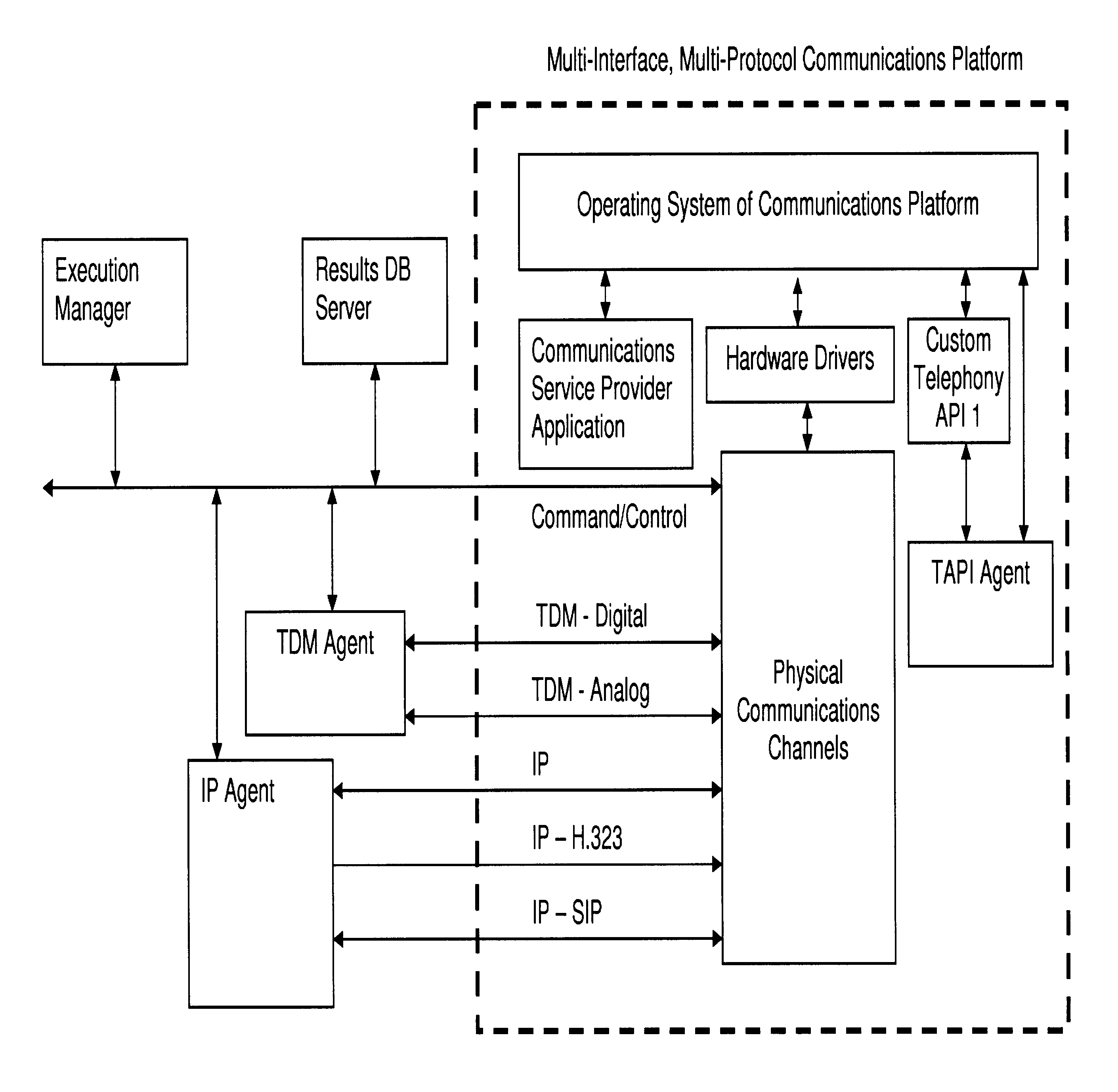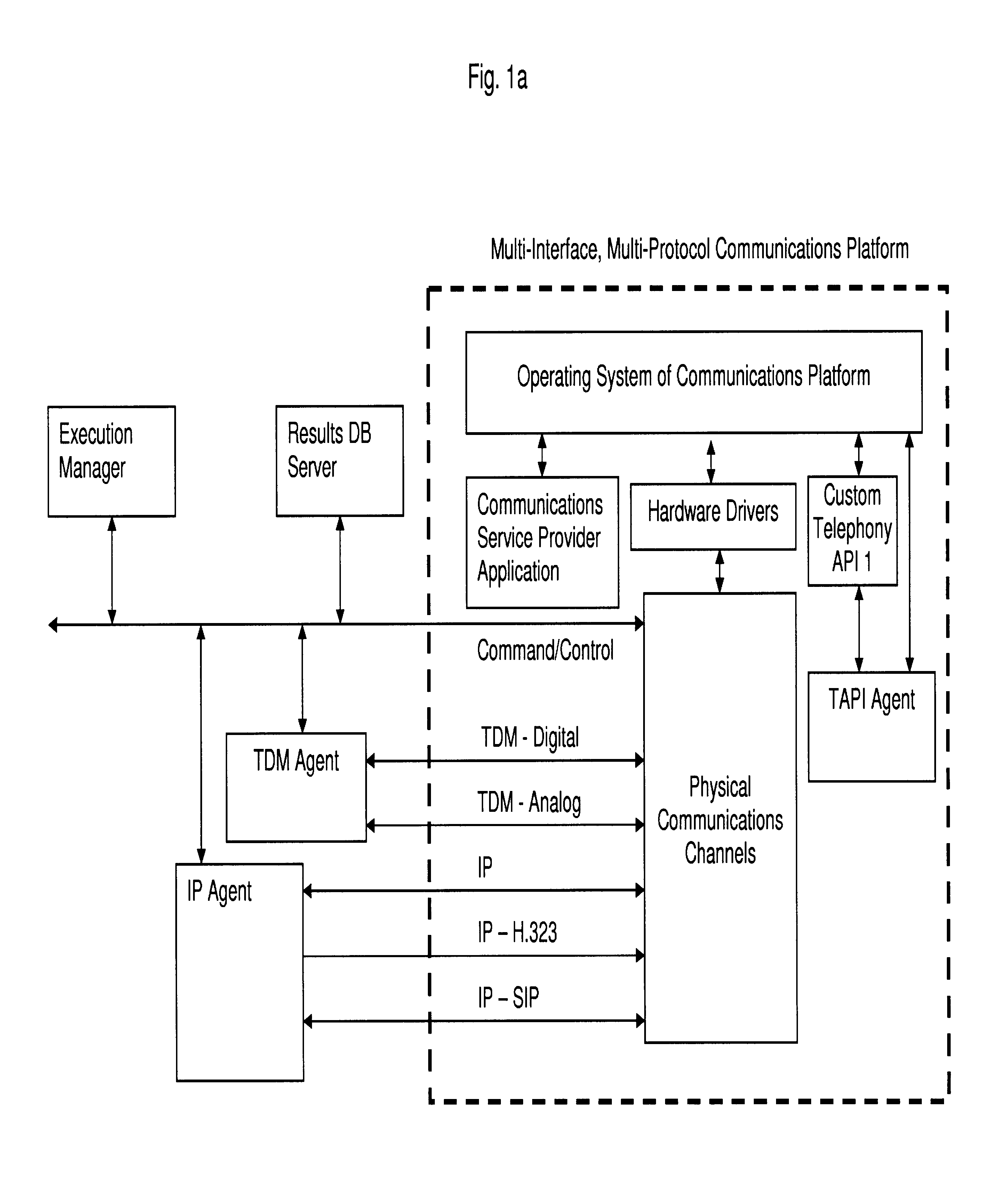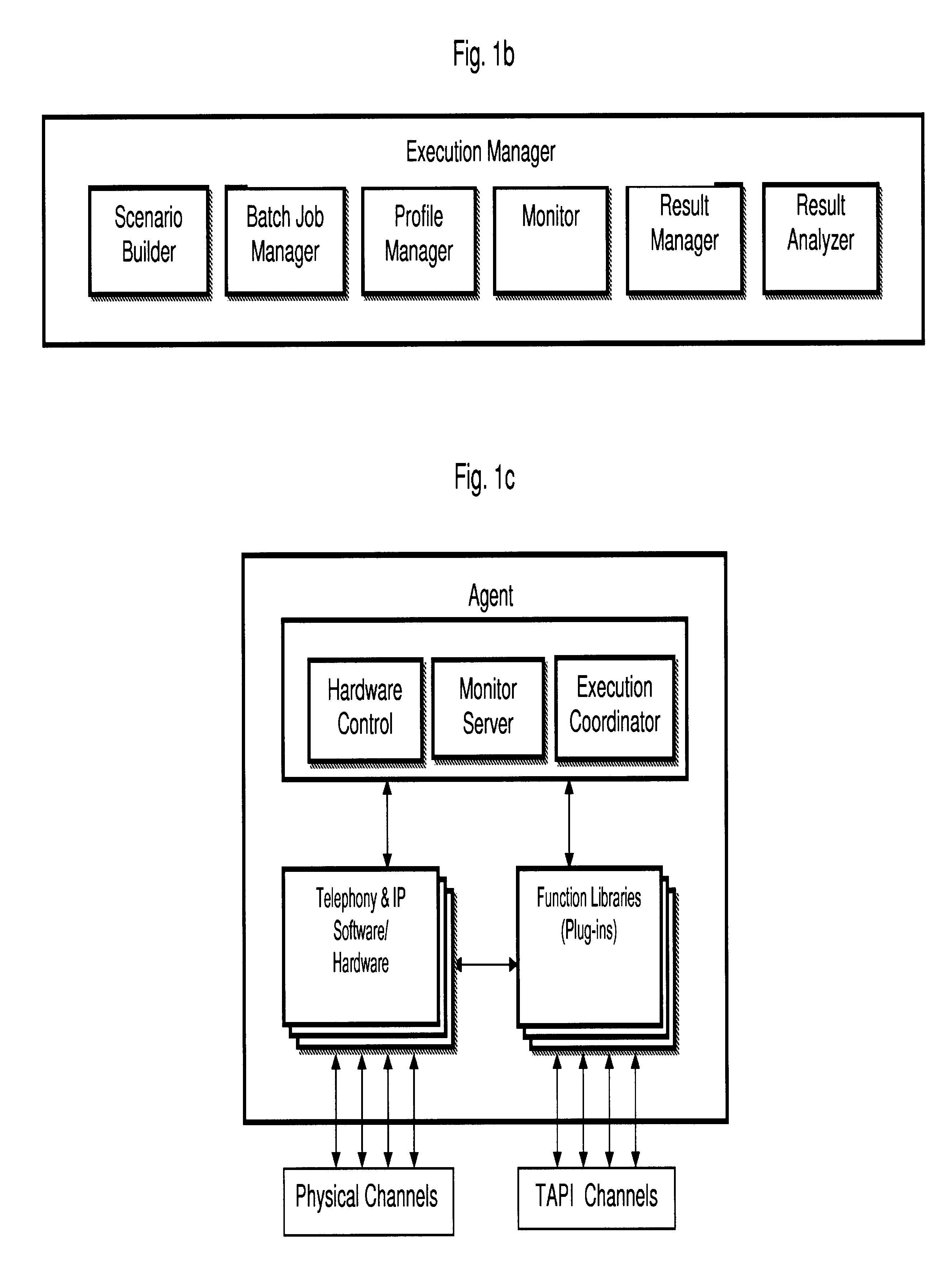Whenever these types of changes are made to complex
software systems, a tremendous risk exists because these changes or additions to the target system could corrupt its existing features.
This problem requires the comprehensive testing of all the related features of the target system.
However, this alone does not provide synchronization of Test Functions across multiple Communications Channels with different Interface Protocols, or the ability to incorporate new Interface Protocols, such as
telephony applications
programming Interface Protocols, into the
scenario builder.
Furthermore, it is known to scan a network to identify computers or agents that may be utilized in a testing
scenario, but this does not provide an ability to itemize the Interface Protocols that may be used on each computer.
Moreover prior systems do not provide for analysis profiles, cross analysis or layered result analysis of test results.
However, many of the foregoing systems suffer from the deficiency of not being able to provide a testing system that can simultaneously test all of the Interface Protocols utilized by today's complex communications platforms.
Accordingly, as the number of Interface Protocols for a communications platform increase, the difficulty of providing a system that can simultaneously control and test different Communications Channels that use different Interface Protocols of the communication platform increases exponentially.
Many other problems relating to testing are caused by the increased complexity of communications platforms.
Because the central console must be networked to the
test equipment during the test, this means that there will be significant network traffic between the testing console and the
test equipment.
This network traffic devoted to executing the Test
Scenario, and collecting the resulting data, can itself become a
bottleneck, which prevents the
test equipment from being utilized to its capacity for testing the communications platform.
However, the use of Agents creates additional problems.
It is more difficult to define a Test
Scenario on the testing console when there a multiple Agent computers.
It is difficult to keep track of which computers are connected to which test equipment, and the communications resources of each test piece of test equipment connected to each Agent computer.
In addition, as communications platforms increase in complexity by implementing more Interface Protocols, it will become even more difficult to keep track of which Agents are interfaced with test equipment that implements the various Interface Protocols.
While all of this information can be “hard coded” into a Test
Scenario, it makes the Test Scenarios more difficult to write and modify.
Another problem resulting from the increased capacity of communications platforms having many Communications Channels is the difficulty of writing Test Scenarios to test all of the Communications Channels.
Writing Test Scenarios is a tedious process, and it is made worse by communications platforms having hundreds or even thousands of Communications Channels.
Another significant problem with newer communications platforms is that many are designed to interface with other pieces of expensive network equipment.
Sometimes, the other expensive network equipment can cost over a million dollars or more.
As a practical matter, many testing facilities do not have the resources to purchase all of the network equipment designed to interact with a communications platform.
This can lead to instances where a new communications platform can not be adequately tested before being released to the public, which decreases the reliability of the communications platform.
Another problem with testing communications platforms is that they are increasingly provided by their manufacturers with communications services provider
software having a
telephony API that is not generally accepted in the marketplace, or even worse, proprietary.
This makes it difficult to thoroughly test the communications services provider software, or other devices intended to connect to interact with it.
Another problem with communications
platform test systems is the ability to test platforms that implement multiple Interface Protocols.
While synchronization has been implemented in test systems in which both Communications Channels use the same
Interface Protocol, synchronization has not been effectively implemented across different Interface Protocols, such as when a call is placed via a TDM Communications Channel to a voice of
Internet Protocol (VoIP) phone.
A more fundamental problem with communications testing systems relates to their flexibility to keep up with the pace of new Interface Protocols for new communications platforms.
It is very difficult and time-consuming to write a testing system for a specific
Interface Protocol, yet new Interface Protocols are introduced on the market with increasing frequency.
Another problem with communications testing systems is the ability to provide meaningful results.
However, this can result in
information overload when many iterations of tests comprised of numerous Test Functions are run across thousands of Communications Channels.
At times, highly detailed information is necessary to pinpoint equipment design flaws and bottlenecks, but when testing only for capacity specifications, collecting too much information is undesirable, and as noted above, the excessive collection of information can actually impede the ability to perform the tests.
Another problem with communications test systems relates to the ability to obtain information regarding the status of a Communications Channel.
 Login to View More
Login to View More  Login to View More
Login to View More 


